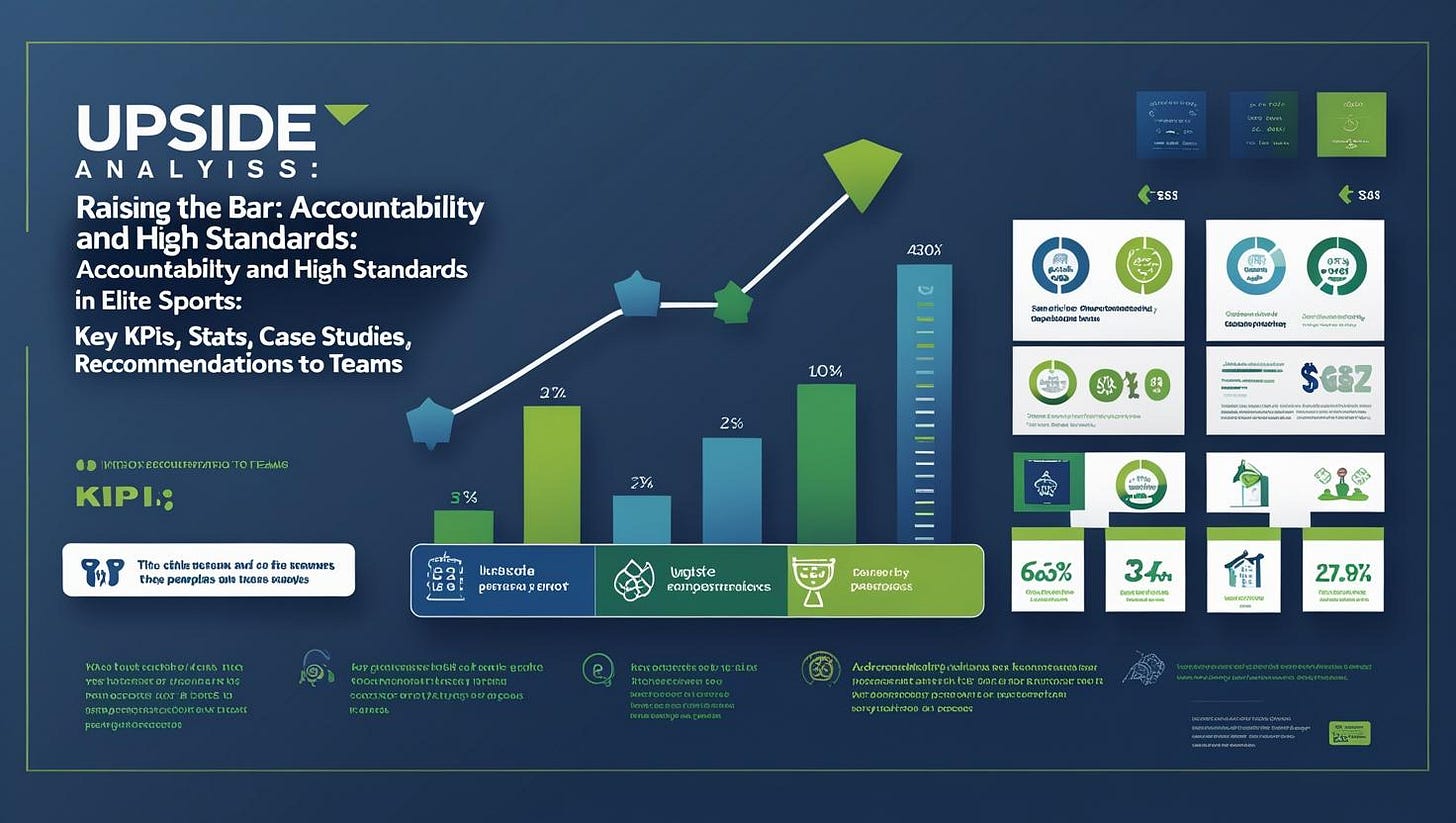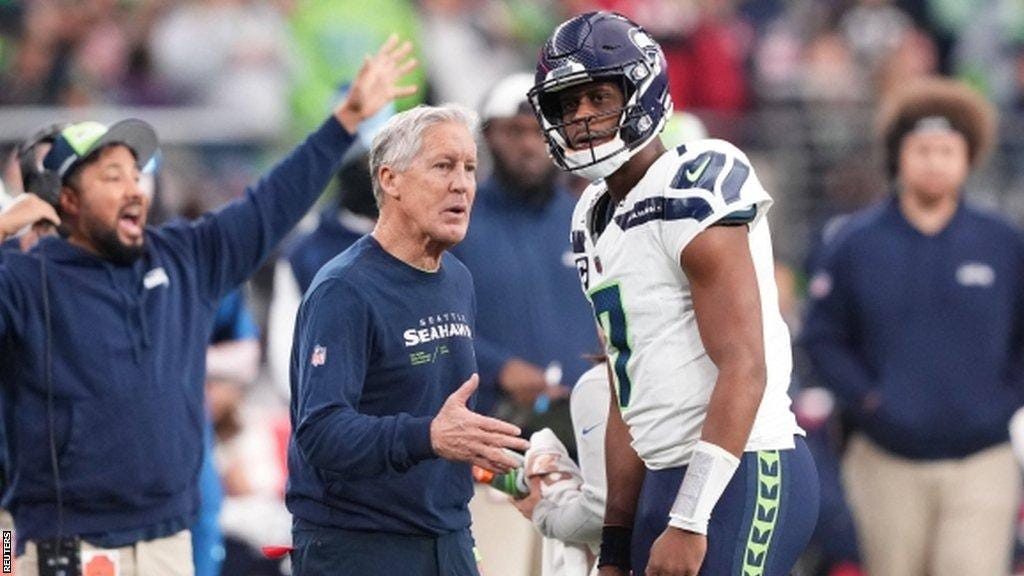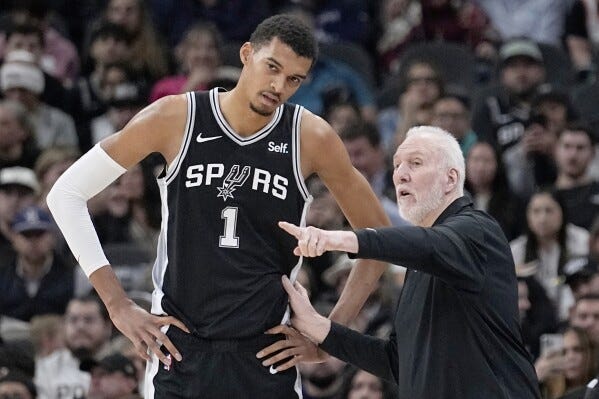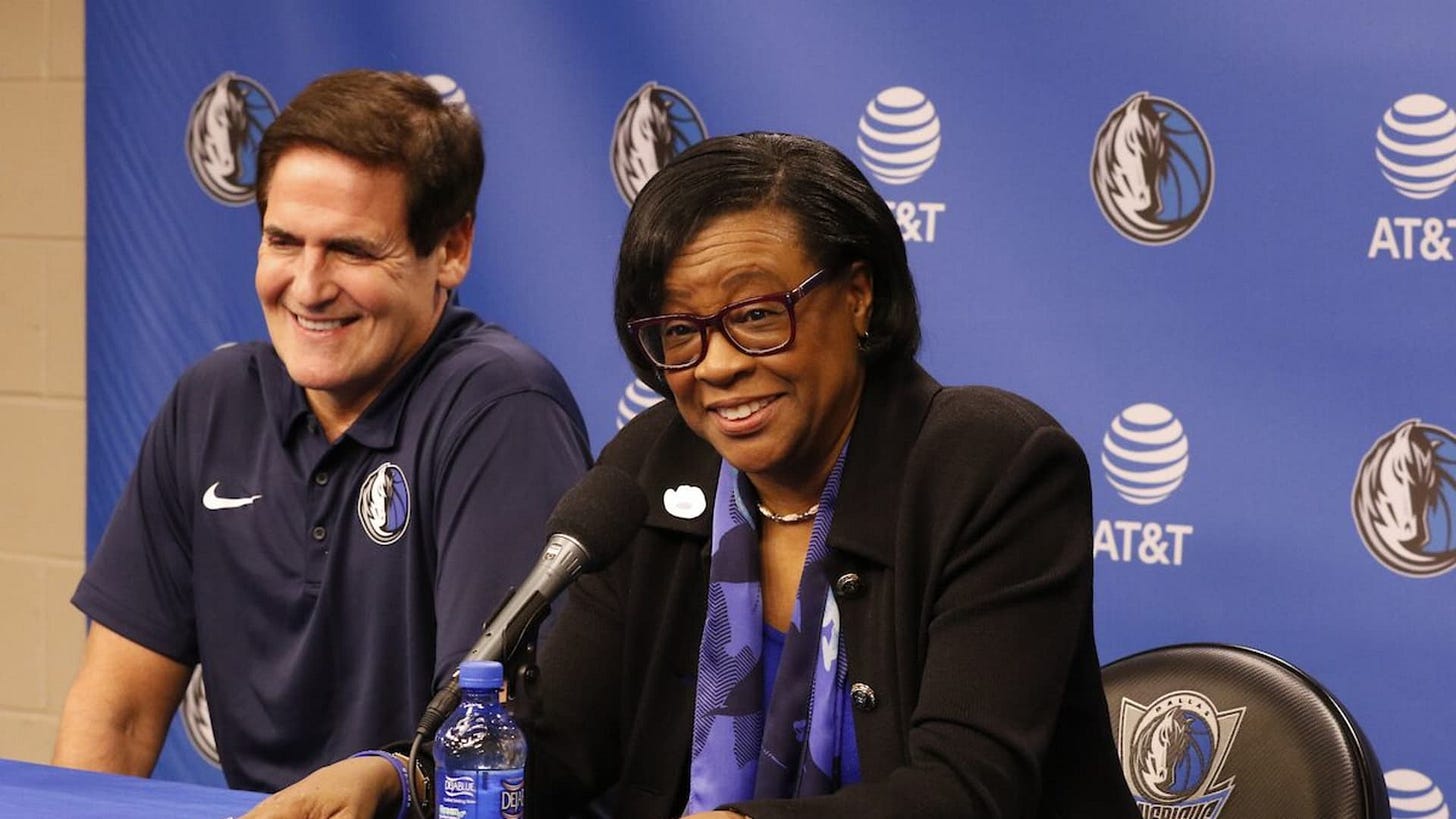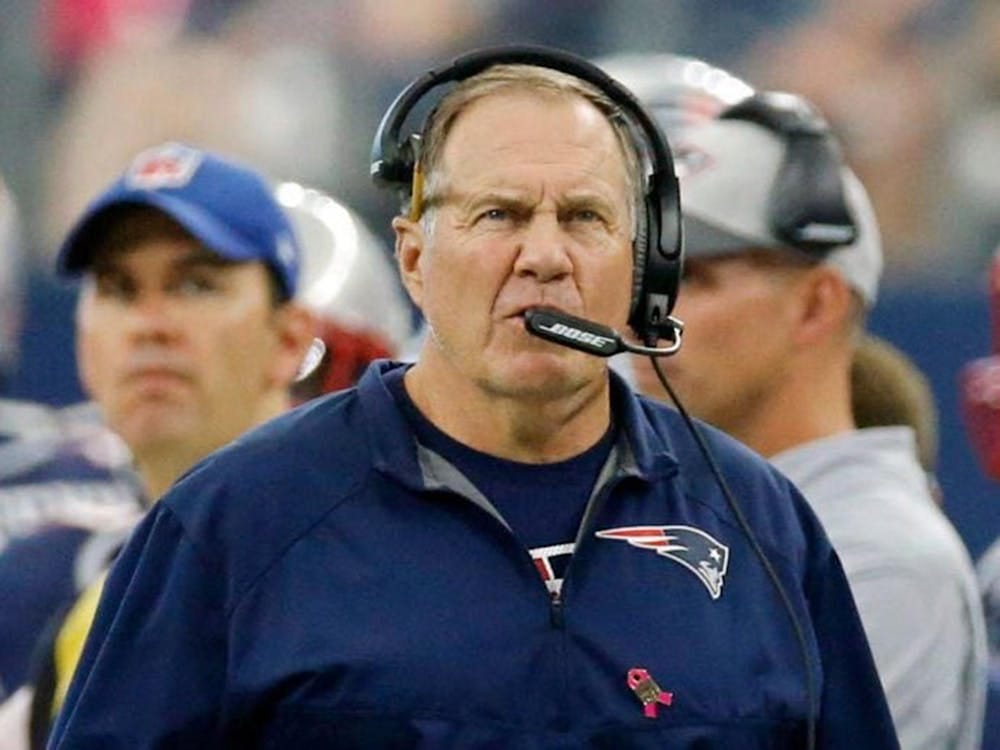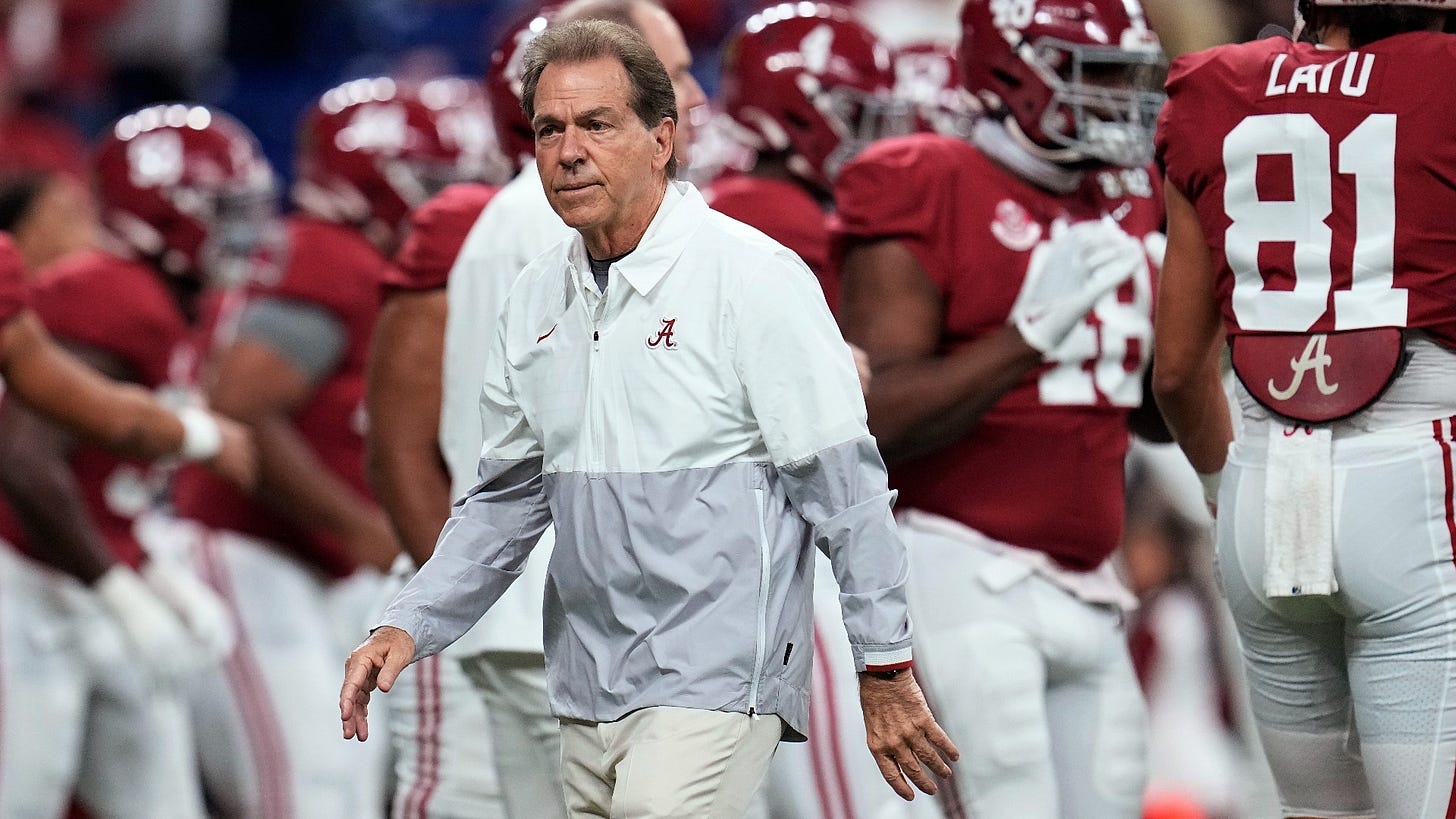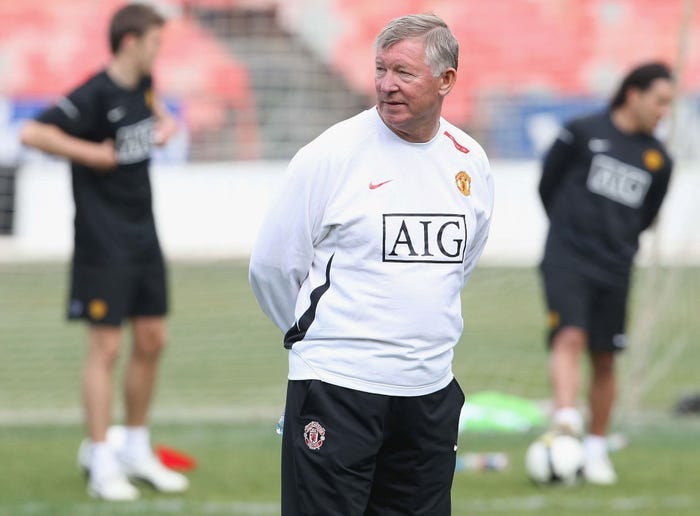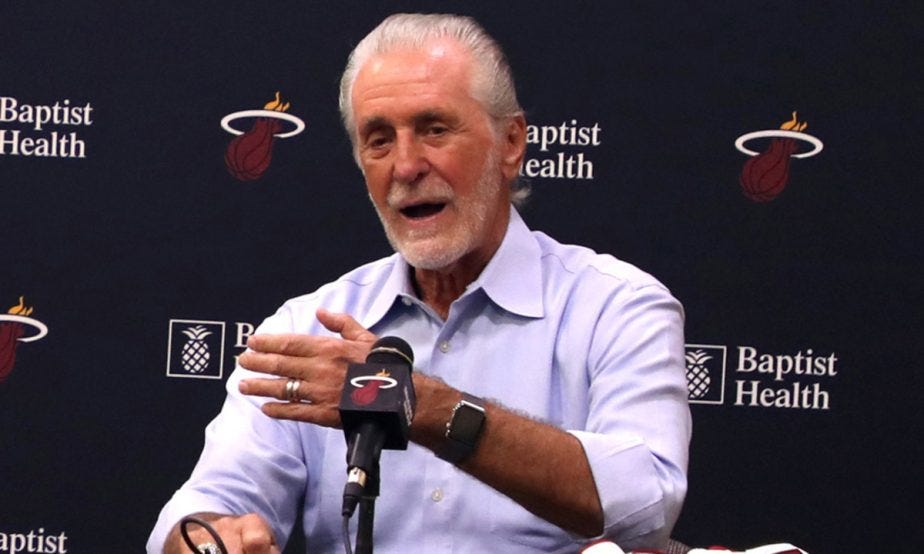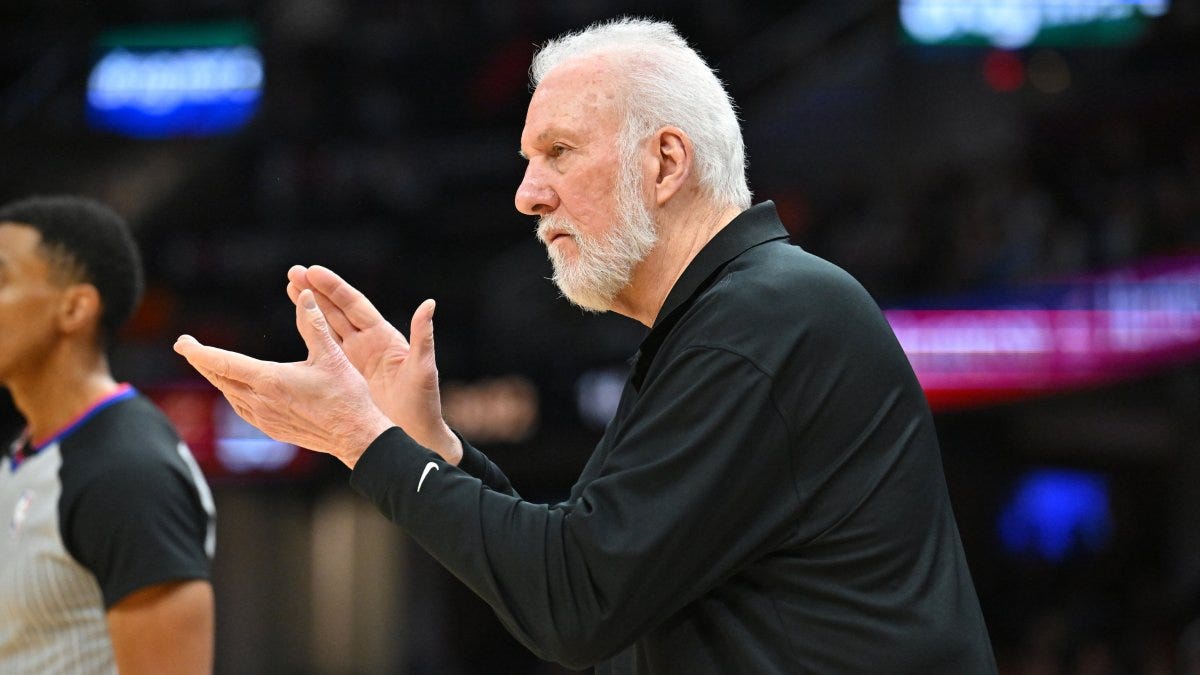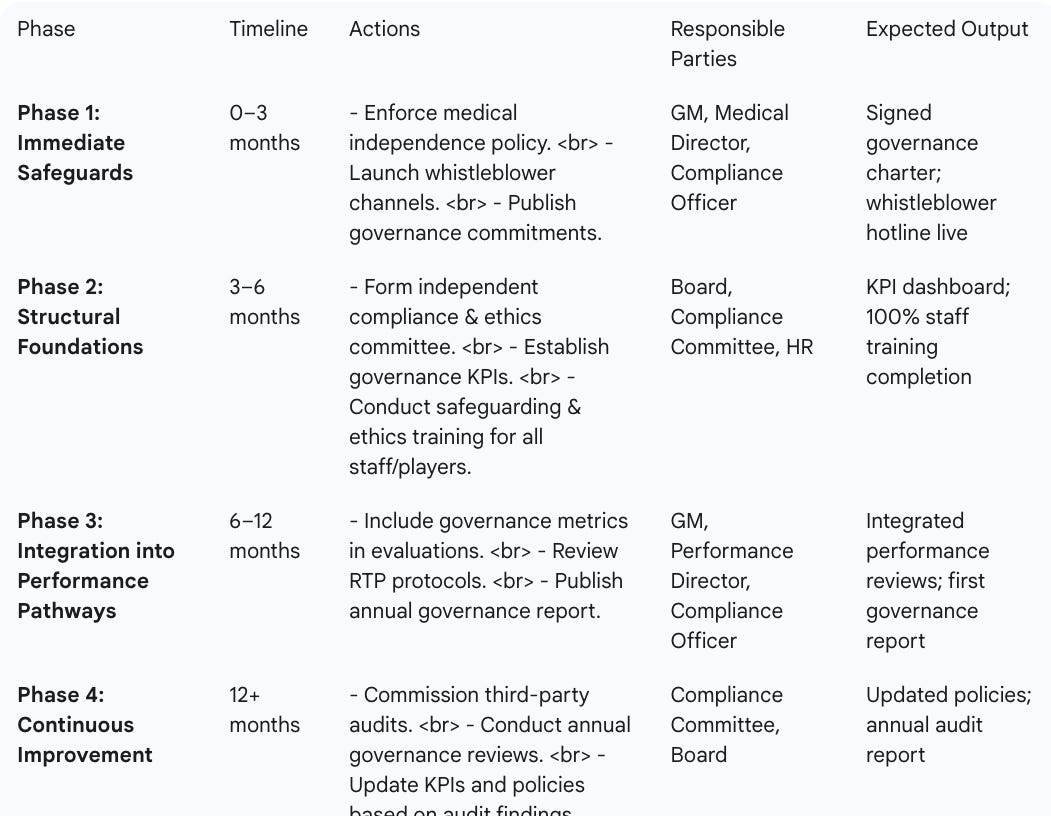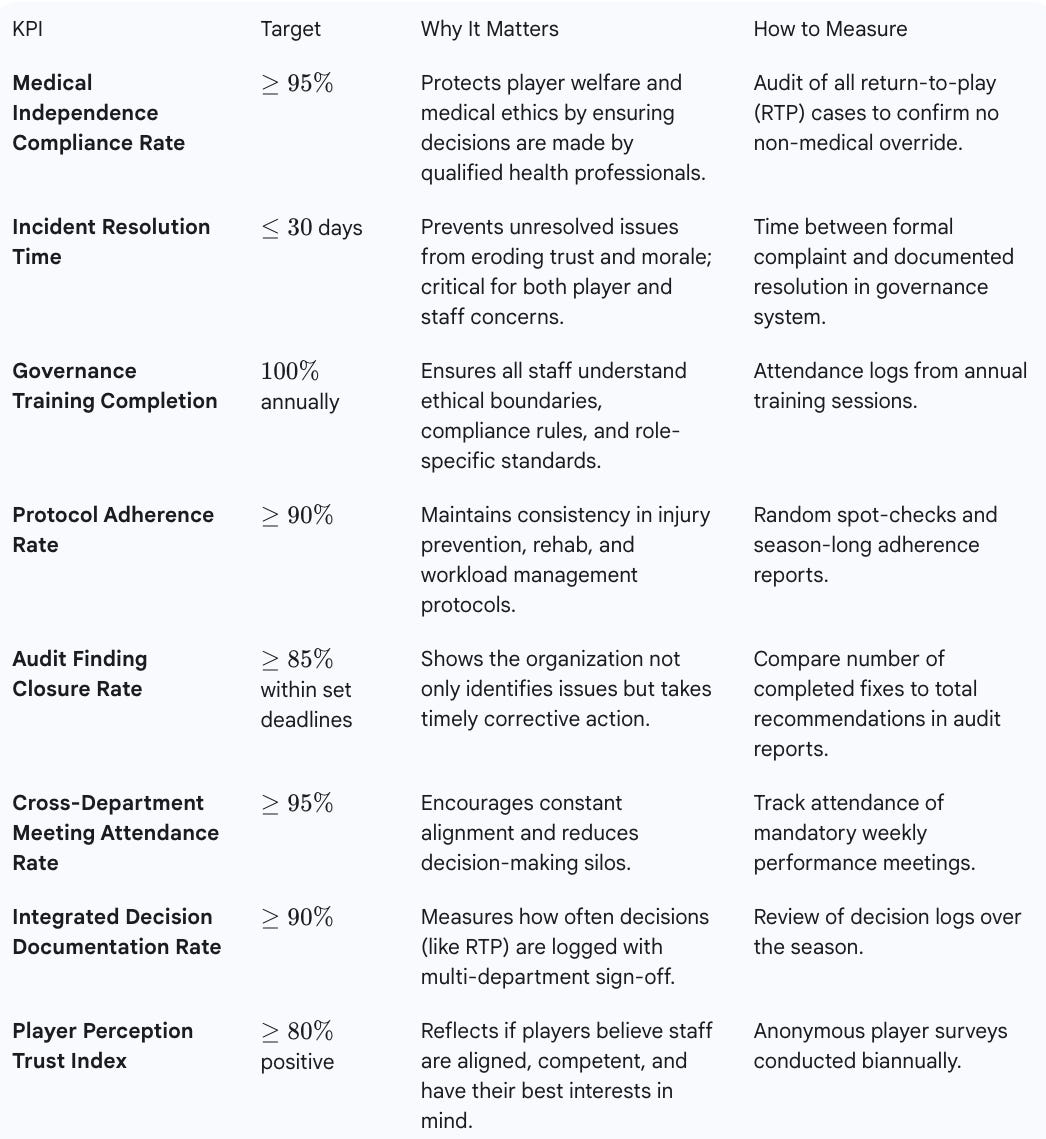🌟 Upside Analysis: Raising the Bar: Accountability and High Standards in Elite Sports: Key KPIs, Stats, Case Studies, Recommentations to Teams
Elite sports operate in a high-stakes environment where success is measured in inches, milliseconds, and split-second decisions. The gap between victory and defeat often lies not in talent alone but in the standards, discipline, and accountability of the people and systems supporting athletes. Players, coaches, general managers (GMs), performance scientists, and medical staff all share responsibility for ensuring that decisions are ethical, data-informed, and in the best interest of both immediate performance and long-term athlete health. Without accountability, even the most talented teams can fail.
Why Accountability Matters Across All Departments
In elite sports, accountability creates alignment. When each department—coaching, performance, medical, and front office—works under a clear framework of responsibility, decision-making becomes faster, more consistent, and more effective.
For players, accountability means adhering to training plans, following recovery protocols, and maintaining professional behavior on and off the field.
For coaches, it means sticking to agreed load management strategies, respecting medical clearances, and owning tactical decisions.
For medical staff, it’s about ensuring objective decision-making, free from competitive pressure.
For GMs and executives, it’s about providing resources, setting ethical standards, and making long-term strategic calls that align with organizational goals.
Accountability isn’t just about avoiding mistakes—it’s about creating a culture where every role matters and every decision has a clear owner.
The Importance of Owning and Doing Your Job
One of the most damaging trends in underperforming organizations is role leakage—when individuals drift into responsibilities that aren’t theirs or avoid the hard calls that are.
Players must take ownership of their conditioning, preparation, and recovery—not leaving it solely in the hands of staff.
Coaches must be accountable for tactical and roster decisions, even when outcomes aren’t favorable.
Medical staff must protect athlete welfare regardless of external pressure.
Performance scientists must ensure that load management is science-driven, not politically influenced.
Executives must safeguard resources, create policies, and ensure they’re enforced.
When everyone owns their role, trust increases and decision-making becomes more efficient. This “stay in your lane but master your lane” approach is a hallmark of consistently successful franchises.
The Importance of Collaborating and Communicating Across Departments
While owning your role is critical, so is sharing information and working across boundaries. Elite sports are too complex for any one discipline to hold all the answers.
Collaboration works best when:
Information systems are unified so data is accessible in real time to all relevant departments.
Structured communication rituals—like weekly multidisciplinary performance meetings—ensure alignment.
Mutual respect for expertise is embedded in the culture, preventing unnecessary overrides and conflict.
Case Studies
1. Seattle Seahawks – Player Leadership Council Model
Under Coach Pete Carroll, the Seattle Seahawks developed a Player Leadership Council that included veteran and emerging voices from all positional groups. This structure allowed peer-to-peer accountability and created a bridge between the locker room and coaching staff. It helped maintain organizational values and cohesion through leadership transitions and playoff runs.
2. San Antonio Spurs – Accountability Culture Under Popovich
The Spurs have consistently upheld a culture of personal responsibility and mutual respect. Coach Gregg Popovich is known for “total, brutal, between-the-eyes honesty”—a leadership style founded on clarity, accountability, and collective success, which has underpinned their multi-championship era.
3. Dallas Mavericks – Culture Transformation Through Leadership
After a reported toxic culture emerged in 2018, owner Mark Cuban publicly accepted accountability and brought in CEO Cynthia Marshall to revamp the organization. This decisive action, including an independent investigation and leadership restructuring, helped catalyze cultural change and restore trust.
Key Quotes
Below are quotes about accountability from well-known coaches, executives, and players.
Bill Belichick (Former Head Coach, New England Patriots)
Quote: “Do your job.” (Source here)
Gregg Popovich (President, San Antonio Spurs)
Quote: “I think you have to have accountability. For us, the thing that works best is total, brutal, between-the-eyes honesty.” (Source here).
Nick Saban (Former Head Coach, Alabama — college football)
Quote: “There are three things we can’t have: We can’t have complacency. We can’t have selfishness and we can’t lose our accountability.” (Source here).
Sir Alex Ferguson (Former Manager, Manchester United)
Quote: “If you give in once, you'll give in twice.” (Source here).
Pat Riley (NBA Executive & Coach)
Quote: “You have no choices about how you lose, but you do have a choice about how you come back and prepare to win again”. (Source here).
LeBron James (NBA Player)
Quote: “I have a responsibility to lead, in more ways than one, and I take that very seriously.” (Source here).
Gregg Popovich (President, San Antonio Spurs)
Quote: “A synergy has to form between the owner, whoever his president is, whoever the GM is, whoever the coach is.” (Source here).
Key Stats & Insights
Reducing Injury via Rule Changes
Long-term data from the Australian Football League (AFL) shows that structural accountability — releasing injury surveillance data and implementing targeted rule changes — led to a notable reduction in knee PCL and hamstring injuries. For example, the introduction of a center–circle rule effectively cut posterior cruciate ligament injuries among ruckmen.
Source: John W. Orchard et al., “Decreased incidence of knee posterior cruciate ligament injury in Australian Football League after ruck rule change.” British Journal of Sports Medicine, December 2009.Collective Efficacy Predicts Performance
In collegiate football, higher levels of collective efficacy—a form of internal team accountability where members believe in shared capability—consistently predicted stronger offensive performance across seasons. This underlines the value of internal cohesion and mutual responsibility.
Source: Nicholas D. Myers, Deborah L. Feltz & Sandra E. Short, “Collective Efficacy and Team Performance: A Longitudinal Study of Collegiate Football Teams.” Group Dynamics: Theory, Research, and Practice, 2004.Transparency and Organizational Accountability
Research on Spanish professional football clubs found that higher financial transparency (a form of institutional accountability) is associated with indicators of financial performance and sustainability. Clubs with greater transparency scores demonstrated healthier financial profiles across multiple seasons.
Source: Transparency and Accountability in Sports: Measuring the Social and Financial Performance of Spanish Professional Football. Sustainability (MDPI), 2021–2019 data.
Recommendations Roadmap for Accountability in Elite Sport
The roadmap for implementing high standards and accountability in elite sports begins with immediate safeguards in the first three months. This phase is about protecting the integrity of decision-making from day one. It involves establishing clear medical independence policies to ensure that return-to-play decisions are free from external pressure, setting up whistleblower channels for confidential reporting, and making public governance commitments so that athletes, staff, and fans understand the team’s stance on ethics and transparency. Responsibility at this stage falls primarily on the general manager, medical director, and compliance officer, with the expected outcome being a published governance charter and fully functioning reporting systems.
In the structural foundations phase (three to six months), the focus shifts toward building formal systems that make accountability sustainable. This means creating an independent compliance committee to oversee decisions, defining and tracking key performance indicators (KPIs) for accountability, and providing targeted training for all staff on governance standards. By the end of this stage, teams should have a functioning KPI dashboard and 100% training completion across the organization, ensuring that everyone knows their role and the metrics by which success will be measured.
The integration into performance pathways phase (six to twelve months) embeds accountability into the day-to-day operations of the team. Governance policies become part of regular staff evaluations, return-to-play (RTP) protocols are reviewed and updated with input from all relevant departments, and teams commit to publishing an annual governance report to ensure transparency. Here, the goal is to ensure that accountability is not just a policy document but an active component of performance and medical decision-making.
Finally, the continuous improvement phase (beyond twelve months) keeps the system alive and evolving. This involves commissioning independent third-party audits, conducting annual governance reviews, and updating KPIs to reflect changes in sport science, regulations, and team needs. The key here is that accountability is never “finished” — it requires constant monitoring and refinement to remain effective.
Expanded Organizational KPIs
The KPI framework for accountability in elite sports is built to measure both ethical governance and operational discipline across the organization. At its core are safeguards to protect player welfare — metrics such as the Medical Independence Compliance Rate ensure that return-to-play decisions are made exclusively by qualified medical professionals, with a target of at least 95% adherence. This protects athletes from pressure to return before they are ready and reinforces the integrity of the medical department.
Another critical category focuses on timeliness and responsiveness. The Incident Resolution Time KPI, with a target of under 30 days, ensures that issues — whether player concerns, internal disputes, or procedural breaches — are addressed quickly before they can undermine morale or trust. Similarly, the Audit Finding Closure Rate measures the organization’s ability to implement fixes promptly after internal or external reviews, with a benchmark of closing at least 85% of identified issues within the designated deadlines.
Organizational readiness is captured through governance and training KPIs. Every staff member should complete annual governance training, ensuring a 100% completion rate, while the Protocol Adherence Rate measures how consistently departments follow established processes for injury prevention, rehabilitation, and workload management. High adherence here translates directly to fewer errors, reduced injury risk, and more consistent player preparation.
The KPIs also emphasize collaboration and communication as measurable outcomes, not just cultural aspirations. The Cross-Department Meeting Attendance Rate, ideally above 95%, confirms that all relevant parties are actively involved in weekly performance reviews, aligning medical, performance, and tactical decisions. Similarly, the Integrated Decision Documentation Rate tracks how often important decisions, like return-to-play clearances, are formally recorded with multi-department sign-offs, ensuring transparency and shared accountability.
Finally, the Player Perception Trust Index brings the athlete’s perspective into the accountability equation, targeting at least 80% positive feedback. This metric is vital because it reflects whether players genuinely believe that staff are competent, collaborative, and acting in their best interests — the ultimate litmus test of a healthy, high-accountability culture. Together, these KPIs form a balanced scorecard that links ethical behavior, operational precision, and trust-building into one cohesive accountability system.
These KPIs should be tracked quarterly, reviewed by leadership, and tied to contract renewals for leadership roles.
Future of Accountability and Recovery Standards
The next decade will see increased third-party auditing, AI-driven injury forecasting, and blockchain-based athlete data security to ensure transparency. High-performing teams will be those that embrace transparency as a competitive edge rather than a compliance burden.
1. Data-Driven Transparency
Widespread use of centralized accountability dashboards showing KPIs across departments in near real-time.
Public-facing summaries of governance metrics (injury return timelines, medical independence rates, player feedback scores) to build fan trust.
AI-assisted analysis to detect anomalies in workload, decision-making speed, or injury recurrence that may indicate accountability gaps.
2. Player Empowerment and Voice
Structured player feedback loops integrated into governance KPIs, ensuring athletes have a meaningful say in performance, medical, and welfare matters.
Digital platforms where players can submit concerns anonymously, with automated tracking to ensure follow-up.
Player association involvement in annual accountability audits.
3. Cross-Department Collaboration as a Standard
Mandatory weekly multi-disciplinary performance reviews combining medical, performance, tactical, and analytics staff.
Shared decision-making protocols where at least two different departments sign off on key player health and workload decisions.
Incentive structures in staff contracts rewarding successful cross-department outcomes rather than siloed performance.
4. Independent Oversight and Compliance
Independent third-party accountability boards that review all major injury and performance-related decisions.
Annual external governance certifications similar to ISO standards in business.
Randomized compliance spot-checks during the season.
5. Integration of Wearable and Performance Tech into Accountability
Use of biometric and workload tracking devices not only for performance optimization but as a safeguard against overtraining and unsafe RTP decisions.
Blockchain-secured player data for transparent injury tracking across an athlete’s career, preventing “hidden” injury histories.
AI-predicted injury risk scores triggering mandatory review meetings before player clearance.
6. Cultural Shift Towards Shared Responsibility
Clearer role definitions ensuring every staff member — from head coach to analyst — understands their part in athlete welfare and organizational ethics.
Education programs for GMs and executives on governance, not just sport strategy.
Recognition and awards for teams demonstrating exemplary accountability practices.
7. Global Benchmarking and Standards
International accountability scorecards allowing comparisons across leagues and sports.
Shared best-practice repositories maintained by governing bodies or player associations.
Inclusion of accountability metrics in league licensing or competition eligibility requirements.
Conclusion
High standards and accountability are not optional in elite sports—they are the foundation of sustainable success. Owning your role, collaborating across departments, measuring what matters, and committing to transparent governance all combine to create an environment where players can thrive, staff can operate ethically, and organizations can achieve lasting success.
You may also like:
3 Upside Case Studies: Leadership Skills Development: (1) Mercedes-AMG Petronas Formula 1 Team, (2) Serena Williams, (3) Steph Curry
🏎️ Case Study 1: Mercedes-AMG Petronas Formula 1 Team — Building a Leadership Culture in the World’s Fastest Team Sport
🧠 Upside Analysis: Leadership Development in Elite Sports: Key Trends, Drivers, Challenges, Methods, Recommendations to Teams
Leadership in elite sports is a defining factor in a team's success, influencing performance, team cohesion, and long-term sustainability. In modern sports, leadership extends beyond the coaching staff to players, executives, and support staff who play vital roles in fostering a high-performance culture. Successful teams recognize that leadership develo…

